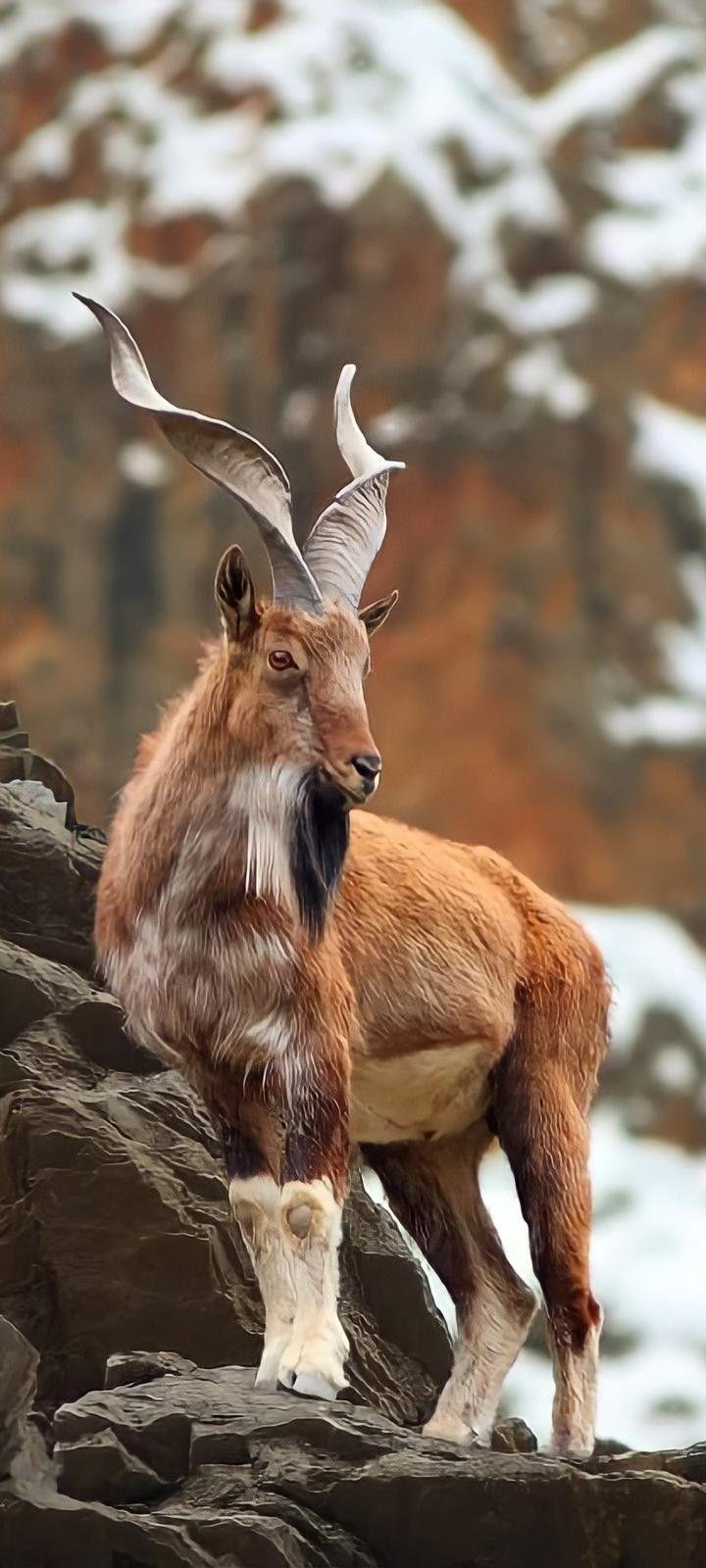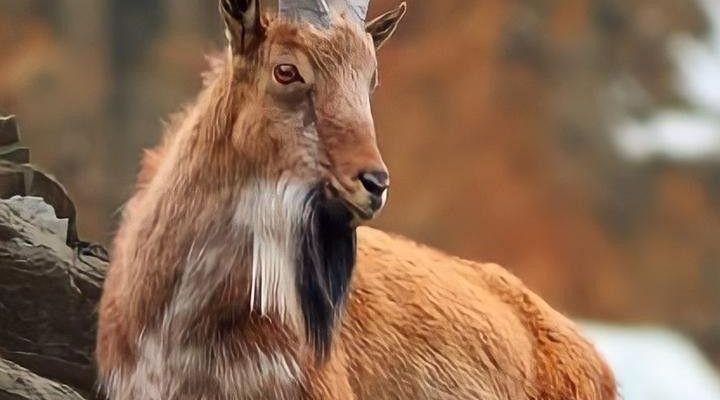
Markhors can be found in the rugged mountains of Central Asia, particularly in regions of Afghanistan, Pakistan, and India. With their impressive spiral horns and thick, shaggy coats, they’re not just stunning to look at but are also equipped with unique traits that help them thrive in harsh environments. So, how exactly do these remarkable animals manage to survive when many others wouldn’t stand a chance?
The Markhor’s Habitat
Markhors inhabit some of the most challenging terrains in the world. They are primarily found in steep, rocky areas and mountainous regions, often at elevations ranging from 2,000 to 4,500 meters (about 6,600 to 14,800 feet). The harshness of these habitats—think sharp cliffs and sparse vegetation—shapes their behavior and survival strategies.
Here’s the thing: the rugged landscape isn’t just a challenge; it’s a crucial aspect of their survival. Their natural habitat provides not only protection from predators but also a strategic advantage for finding food. These goats feed on a variety of plants, including shrubs, leaves, and grasses that flourish in rocky crevices. Their ability to nimbly navigate steep terrain allows them to access food sources that aren’t available to larger grazers.
Honestly, the markhor’s habitat is a showcase of nature’s ingenuity. While other animals might shy away from such rugged environments, the markhor thrives, turning challenges into opportunities. Their strong hooves and muscular build enable them to climb and forage in places that seem almost impossible to reach.
Physical Adaptations for Survival
Markhors come with an impressive set of adaptations that make them well-suited for life in harsh climates. One of their most distinct features is their thick, long fur, which acts as insulation against cold temperatures. Just imagine how cozy they must feel when the mountain winds whip through the valleys!
Additionally, these animals possess large, spiral horns that can grow up to 1.5 meters in length. While these horns are used for defense and during mating displays, they also play a role in their survival. The horns can help mark territorial boundaries, signaling to others that this area is claimed. This social behavior reduces conflict and keeps them safer in their environment.
Moreover, markhors have a unique ability to adapt their diet based on what’s available. In the warmer months, they graze on luscious greenery, while in the winter, they switch to tougher, woody plants. This flexibility is crucial for surviving seasonal changes in their habitat, ensuring they always have food even when resources are limited.
Social Structure and Behavior
Markhors are generally social animals and can often be found in small herds. Living in groups offers them safety in numbers, which is particularly important when it comes to avoiding predators like leopards and wolves. These herds usually consist of females and their young, while males typically lead a more solitary lifestyle, especially outside of the mating season.
During mating season, the dynamics shift. Males will engage in displays of strength, often clashing their impressive horns to assert dominance and attract females. It’s a rough-and-tumble affair! These interactions not only help choose mates but also play a role in establishing social hierarchies within the group.
Here’s an interesting point: the size and condition of a markhor’s horns can indicate its health and vitality, making them a key factor in attracting mates. This social structure ensures that the strongest genes are passed on to the next generation, which is vital for the survival of the species in such challenging conditions.
Water Sources and Foraging Strategies
In many of the arid regions where markhors live, finding water can be more challenging than it sounds. Yet, these goats have evolved clever strategies to meet their hydration needs. Markhors often drink from streams and rivers, but they can also get moisture from their food, especially from fresh vegetation.
During hot, dry periods, markhors can be seen foraging at dawn or dusk when temperatures are cooler. They’re smart about it! Not only does this help them avoid the heat of the day, but it also minimizes their exposure to predators.
Markhors will also travel considerable distances to find food and water. Their keen sense of smell helps them locate edible plants and water sources, allowing them to navigate their rugged environment more effectively. This ability to adapt their foraging behavior depending on the season and availability of resources is essential for their survival.
Conservation Challenges
Despite their incredible adaptations, markhors face significant threats from human activities. Habitat loss due to agriculture and overgrazing poses a severe risk. As humans encroach on their territory, these goats find their food sources diminishing, making survival more challenging.
Additionally, poaching has historically been a significant threat to markhor populations. Their impressive horns are highly sought after, which has led to a decline in their numbers. Conservation efforts are underway in several areas to protect these remarkable animals and their habitats, involving local communities and government bodies.
It’s crucial to raise awareness about the importance of markhors in their ecosystems. As grazers, they help maintain plant diversity, which in turn supports a wide array of other wildlife. Protecting them is not just about saving a single species; it’s about preserving the balance of the entire mountain ecosystem.
The Role of Climate Change
Climate change is another looming threat for markhors. Shifts in climate patterns can affect their food availability and water sources, making their already challenging existence even tougher. As temperatures rise and weather patterns change, the delicate balance of their habitat is disrupted.
Markhors are incredibly adaptable, but even they have limits. Changes in vegetation growth can affect their diet, and altered precipitation patterns can impact their water sources. If these changes continue or worsen, it could lead to significant population declines.
Here’s the thing: climate change is a global issue, but its impacts are felt at the local level. By working to combat climate change and preserve natural habitats, we can help markhors and many other species that share their environment adapt and thrive.
Markhors are a testament to nature’s resilience and adaptability. Living in harsh environments, they showcase a remarkable ability to survive and thrive despite numerous challenges. From their physical adaptations and social behaviors to their foraging strategies, every aspect of their life is a masterclass in survival.
As we learn more about these incredible creatures, it becomes clear that protecting them is essential—not just for their sake but for the health of the ecosystems they inhabit. By understanding the challenges they face, we can help advocate for their conservation and ensure that future generations can appreciate their beauty and strength.
So, the next time you think about survival in tough conditions, remember the mighty markhor. They remind us that with the right adaptations and a strong community, even the harshest environments can be conquered.

